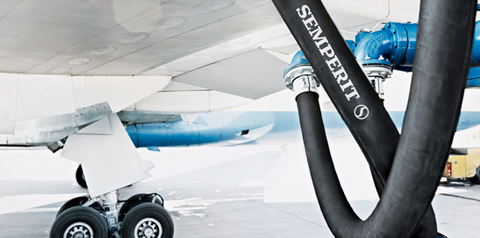Vienna – Semperit AG has continued recovery in the third quarter of 2025, following a weak start to the year.
The three months to end of September saw earnings (EBITDA) grow 28.7% year-on-year to €16.6 million, on 1.1% higher sales of €163 million, Semperit reported 12 Nov.
Earnings were also up compared to €19.6 million in the second quarter, and €11.1 million in the first quarter, the Austrian group noted.
Over the first three quarters of the year, revenue came in at €483.4 million, down 4.6% year-on-year, while earnings fell 18.6% to €52.0 million.
“The order situation has recovered noticeably over the course of the year and contributed to the positive earnings development in the third quarter, explained CEO Manfred Stanek.
Efficiency measures have also helped the group strengthen margins, which grew to 13.1% over the quarter, up from 10.3% reported last year.
The Vienna-based group expects saving measures introduced since the beginning of the year will further reduce its annual cost base by more than €10 million.
“Even though the market environment remains challenging, we believe we are very well positioned for the coming year,” said Stanek.
For the full year, Semperit expects operating earnings (before project costs) to be around €78 million, in line with the previous estimate of between €65 to €85 million).
The costs for the digitalisation project ‘oneERP’ that will affect earnings by €5 million.
Over the nine-month period, Semperit Industrial Applications (SIA), which comprises ‘hoses’ and ‘profiles’, generated revenue of €201.2 million, down 1.0% compared to the same period last year.
Segment earnings fell 8.3% to €37.7 million, reported Semperit.
According to the group, demand remains subdued for hydraulic and industrial hoses due to the ‘general market situation.
While the OEM business – direct customers – has performed poorly, Semperit noted a positive trend: inventory reduction is largely complete.
However, it warned, the timing and speed of a sustained recovery in demand remain difficult to predict.
While both order intake and order backlog over the nine-month period were up on the previous year, Semperit said volumes “did not quite reach the previous year’s level.”
For elastomer and sealing profiles, demand and order intake remained subdued due to the continuing weakness of the construction industry.
Nevertheless, Semperit said the first economic lead indicators, such as the number of building permits in the German construction industry, are showing the signs of stabilisation after three years of decline.
However, it stressed a short-term recovery is not expected, due to a lag between the approval and the actual implementation of construction projects.
Meanwhile, Semperit Engineered Applications (SEA), which includes ‘form, belting and liquid silicone rubber/LSR’ has seen a recovery over the recent months, according to the Austrian group.
The segment was confronted with “project postponements” by customers in the conveyor belt and LSR muold businesses in the first quarter.
However, it recovered in the following quarters and generated an overall revenue of €282.2 million over the first three quarters, down 7.0% year-on-year.
Earnings came in 28.5% lower than the previous year at €26.3 million while margins dropped 2.8 percentage points to 9.3%.
The ‘form business unit’, which has also included the Mandrel hose product group since the beginning of the year, recorded a slight increase in revenue.
Demand developed differently across the board: Mountain applications, industrial, and handrail Europe performed particularly well.
Meanwhile, the Chinese market for handrails remains challenging, with demand hampered by weak infrastructure development.
Overall, order intake and order backlog in the form business unit were above the previous year’s level.
The ‘belting business unit’ was mainly affected by ongoing delays in customer projects and significantly increased uncertainty regarding US tariff policy.
Other factors included temporary shifts in the product mix toward lighter belts and price pressure from Asian competitors.
Here, Semperit said, the order situation “began to recover in the second quarter, but momentum slowed somewhat in the third quarter.”
The LSR business unit (Rico) recorded stable revenue compared to the previous year but was able to increase earnings.
In terms of LSR end-market demand, Semperit said production call-offs from the healthcare sector increased, while demand from consumer goods and food remained stable.
Demand in the mobility segment remained "at a high level" while declines were seen in areas related to the construction industry.
In mould production for external tools, there was "a significant recovery" after project-related delays in the first quarter.



